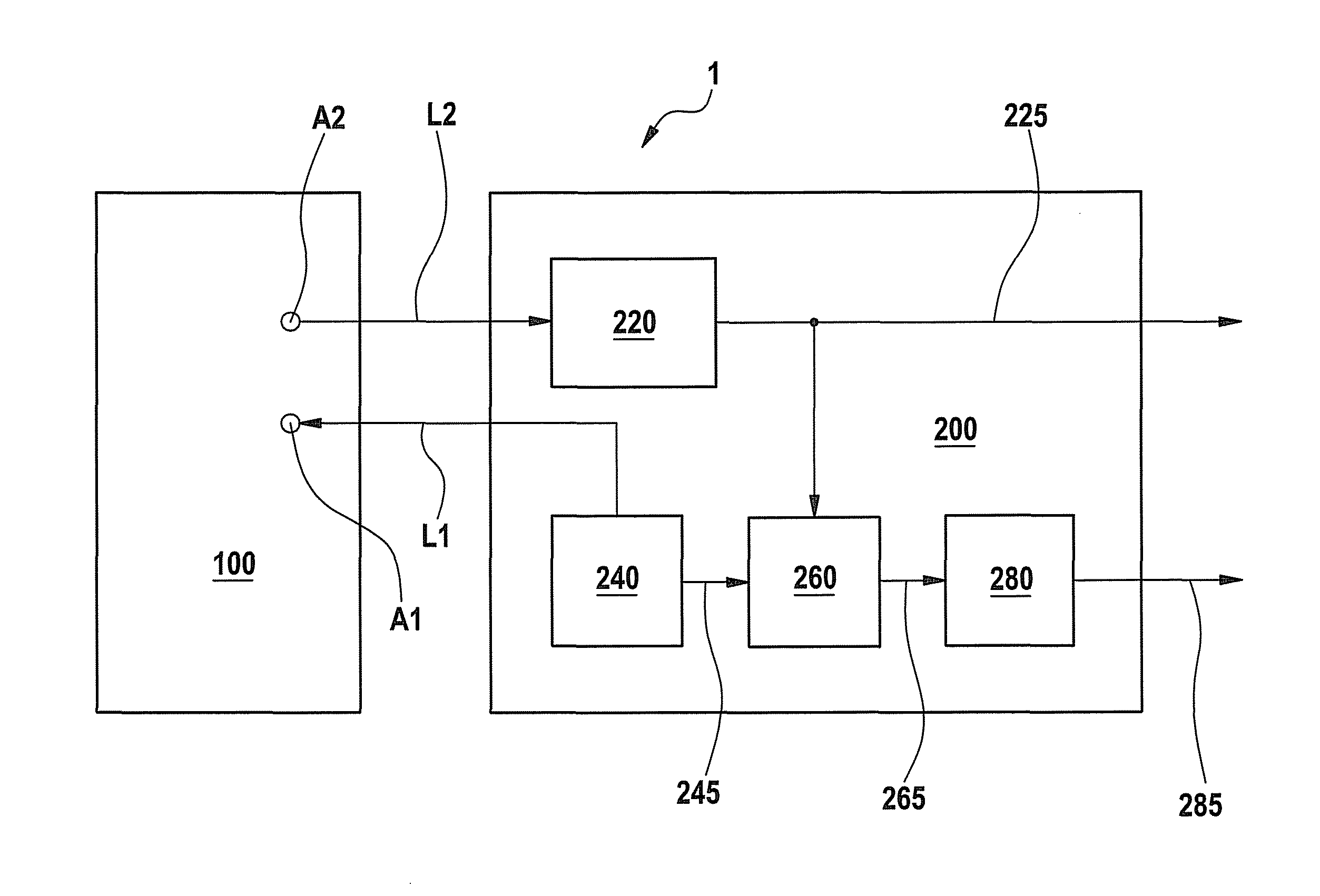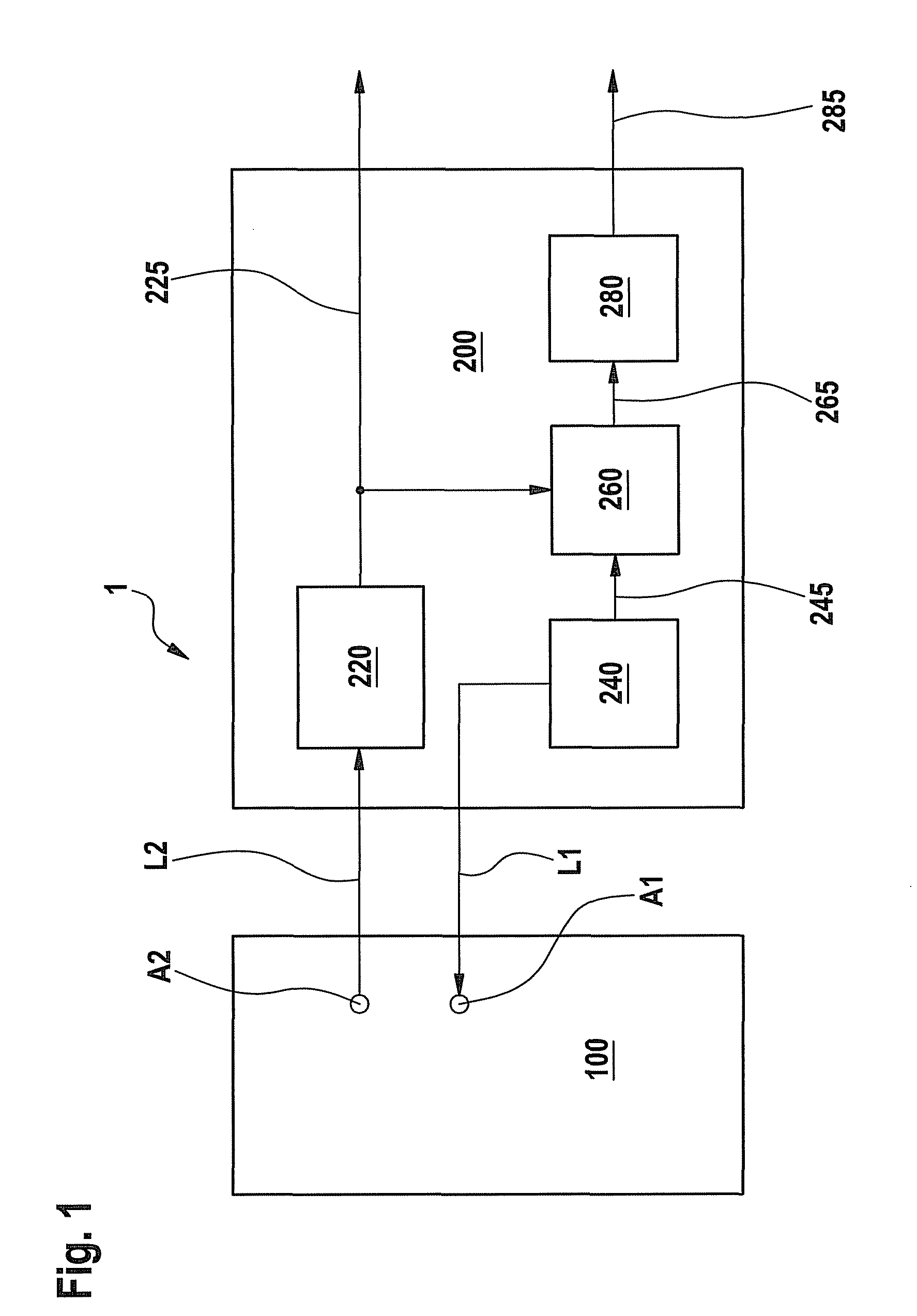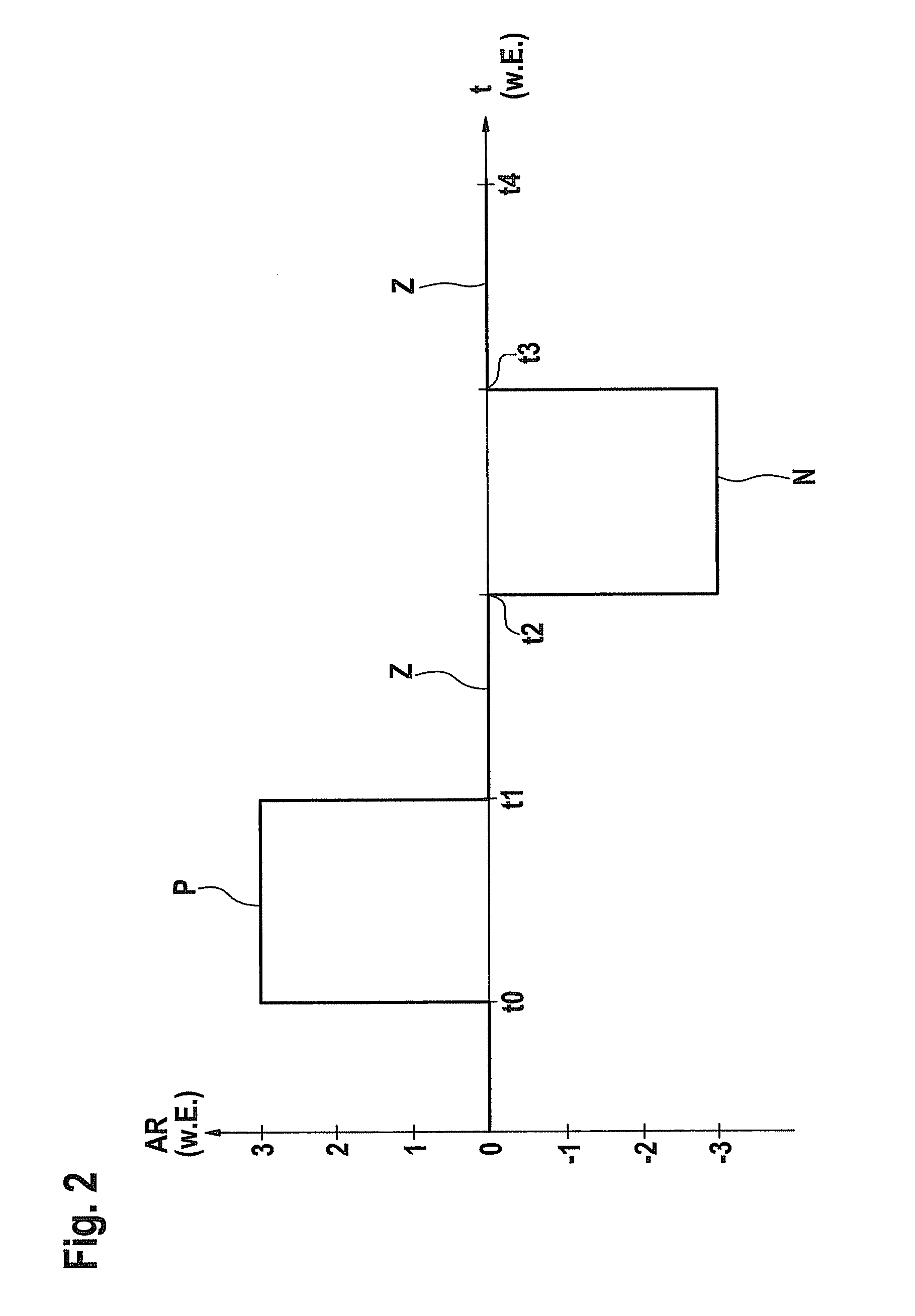Method for carrying out a self-test for a micromechanical sensor device, and corresponding micromechanical sensor device
a sensor device and micromechanical technology, applied in the field of micromechanical sensors, can solve the problems of unsatisfactory results, inability to control the self-test using complex algorithms, and the sensor response to the self-test stimulus may be distorted externally or even completely overridden, etc., to achieve the effect of self-test evaluation, more robust self-test results, and increased robustness of the self-test procedur
- Summary
- Abstract
- Description
- Claims
- Application Information
AI Technical Summary
Benefits of technology
Problems solved by technology
Method used
Image
Examples
Embodiment Construction
[0019]Identical or functionally equivalent elements are denoted by the same reference numerals in the figures.
[0020]FIG. 1 shows a block diagram of a micromechanical sensor device according to one specific embodiment of the present invention.
[0021]In FIG. 1, reference numeral 1 denotes a micromechanical sensor unit having a micromechanical function portion 100 and an electronic evaluation circuit 200 which are electrically connected to one another via electrical lines L1, L2, respectively, the corresponding connecting points on the micromechanical function portion 100 being denoted by A1 and A2 and formed by bonding lands, for example.
[0022]Electronic evaluation circuit 200 includes an evaluation module 220, an excitation module 240, a demodulation module 260, and an assessment module 280.
[0023]Evaluation module 220 is used for evaluating the sensor signals during actual operation of the sensor, and also for evaluating the sensor signals in self-test mode, and delivers a sensor outp...
PUM
 Login to View More
Login to View More Abstract
Description
Claims
Application Information
 Login to View More
Login to View More - R&D
- Intellectual Property
- Life Sciences
- Materials
- Tech Scout
- Unparalleled Data Quality
- Higher Quality Content
- 60% Fewer Hallucinations
Browse by: Latest US Patents, China's latest patents, Technical Efficacy Thesaurus, Application Domain, Technology Topic, Popular Technical Reports.
© 2025 PatSnap. All rights reserved.Legal|Privacy policy|Modern Slavery Act Transparency Statement|Sitemap|About US| Contact US: help@patsnap.com



